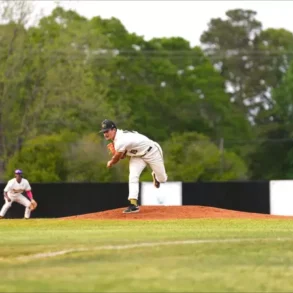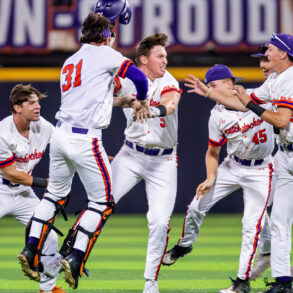The transition from collegiate baseball to Major League Baseball (MLB) is controlled by particular eligibility requirements. Understanding these rules is critical for aspiring players looking to advance to the major leagues.

MLB Draft Eligibility: When Can College Baseball Players Go Pro?
Understanding the MLB Rule 4 Draft
The MLB Rule 4 Draft, commonly known as the First-Year Player Draft, is the main mechanism by which MLB teams recruit amateur players from high schools, colleges, and other amateur baseball clubs.
The draft is normally held yearly between June 1 and July 20 and consists of 20 rounds, as specified in the 2022-2026 Collective Bargaining Agreement.
College Baseball Player Eligibility for the MLB Draft
Four-Year College Players
Players enrolled in four-year colleges or universities become eligible for the MLB Draft under the following conditions:
- They have completed at least three years of college.
- They turn 21 years old by the time of the draft.
This strategy ensures that student-athletes have enough time to develop their skills before entering professional baseball.
Junior College Players
Players attending junior colleges (two-year institutions) can enter the MLB Draft at any time, regardless of age or academic status.
This flexibility allows those who choose this career path to enter professional baseball earlier.
MLB Draft Lottery
The MLB Draft Lottery, which was introduced as part of the collective bargaining agreement in 2023, determines the order of non-playoff teams’ first six picks.
This strategy is designed to prevent teams from purposefully losing games to achieve higher selection places.
- Eighteen teams that did not make the postseason participated in the lottery.
- The three teams with the worst records have equal odds of securing the top pick.
- Revenue-sharing recipient teams can receive lottery picks in two consecutive drafts, while non-recipients are limited to one top-six selection in a single draft year.
For example, in the 2024 MLB Draft Lottery, the Cleveland Guardians secured the first overall pick despite having a 2% probability, highlighting the lottery’s unpredictability.
Also Read: Ranking the 5 Biggest Upsets in College World Series History
Navigating the MLB Draft necessitates a thorough understanding of eligibility requirements and the impact of the draft lottery system. College baseball players should be educated about these processes so that they can make strategic decisions about their careers.
College Sports Network has you covered with the latest news, analysis, insights, and trending stories in football, men’s basketball, women’s basketball, and baseball!
This post was originally published on this site be sure to check out more of their content.






